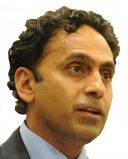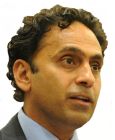Memory
Do It for Your Brain: 3 Habits That Improve Learning
Start the school year strong with psychological science.
Posted September 12, 2022 Reviewed by Gary Drevitch
Key points
- Most students hold false beliefs about what helps learning. They SHOULD take notes, attend class, and practice testing themselves.
- Human brains need to move information from working memory to long-term memory.
- Three simple behaviors can change how students learn and improve exam scores.

- I do not need to take notes as it is all in the book.
- I can skip class or text and check social media during it since I can always get a recording to watch later.
- I do not have to read the syllabus because they will go over it all in class.
- I will cram for the exam the day before.
These are common student thoughts, attitudes, and beliefs. Every single one of them is WRONG and makes learning difficult. Acting on these beliefs predicts poorer exam scores, and more importantly, poor learning over the long term. Psychological science, especially research on cognition, neuroscience, teaching, and learning, has key suggestions for which behaviors students should practice and why. At the heart of it all is that our brains and memory systems have limitations and we can help them out. Below are some simple strategies for starting the academic year strong.
First, we should not blame students too much for thinking these thoughts. Many course designs and teacher practices seem to foster and reward some of these behaviors. If tests are not cumulative, or students do not have the chance to demonstrate their knowledge over time, then cramming seems to work. If slides are packed with text and class is pure one-directional content delivery from instructor to student, then getting the slides seems to preclude note-taking and even attendance. Not enough educators stress the importance of note-taking and other useful strategies, or if they do, do not tie it to what it does for our brains.
Our brains are fascinating organs. We have about 128 billion neurons and counter to the myth, we use all of them (Feldman Barrett, 2020). Learning, not surprisingly, is governed by different parts of the brain. For learning—a relatively long-term change in knowledge—to take place, we need to get new material into our long-term memory (LTM). LTM has a large capacity and can store material for long periods of time, depending on how well that material is learned. But before information can go into LTM, it resides in working memory (WM), which has a very limited capacity and short storage time (Oakley et al., 2021).
State-of-the-art research suggests WM can only remember four chunks of information and relies on structures called the hippocampi, two penny shaped clusters of neurons or brain cells. Based on what the learner does, the hippocampi help store the memories in LTM, which is primarily five-to-six layers of neurons that cover the bulk of the brains like a squishy blanket. This neocortex is where what we want to learn resides. To get it there from working memory, there are some simple practices to follow. This is where note-taking, attention, and specific study strategies come in.
Pay Attention. Attention is a key part of learning. Because of the low capacity of working memory, the less attention one pays in class, the less likely will material from WM go into LTM. WM capacity also varies from person to person which explains why some students can listen to music and study while others cannot. Distractions such as music, movies, and shows, or even people talking around us, all tax WM. Of course, if you do not attend class, well, you have even more work to do and listening to a recording without attendance rarely measures up.

Take Notes. The process of taking notes makes the listener actively work with the material to be learned. Assuming the speaker is not talking too fast and provides time to reflect, taking good notes is a significant learning strategy. Notes help you organize material, provide a record of what is to be learned, and aid your working memory in strengthening what is to be learned. It is also important to look over notes the same day they are taken to support the transition of material from WM to LTM.
Practice Retrieval. Ask almost any cognitive scientist what the best way to study is and they will likely say successive relearning. The key components involve testing your self on what you are learning frequently, and spacing out how often you test. The mere fact of seeing if you can remember something makes the neurons that represent that knowledge form stronger connections with other neurons. The stronger the connections, the stronger the memory, and the easier it is for your brain to organize the information in your neocortex. Practicing retrieving information is one of the best ways to help your brain move information from WM to LTM. The more you practice, especially separated out by time, the better your memory for the material and the better the learning.

These three strategies are at the heart of effective learning. There are many ways to take good notes and practice retrieval (Gurung & Dunlosky, 2023), and both of these strategies can benefit from consciously monitoring your knowledge. These are good habits to start and develop early. When classes start again, it is easy to fall back into past habits. Many students think that just rereading notes, highlighting a lot, and making flashcards to memorize key terms are good study habits. The research says otherwise. These strategies actually have very low usefulness. Planning on taking good notes and then building in retrieval practice for all classes spread out over multiple days a week is key.
What should students prioritize this school year? Going to class. Taking good notes. And practicing retrieving information. It's good for the brain.
References
Feldman Barrrett, L. (2020). Seven and a half lessons about the brain. Mariner Books.
Gurung, R. A. R. & Dunlosky, J. (2022). Study like a champ: The psychology based guide to “Grade A” study habits. American Psychological Association.
Oakley, B., Rogowsky, B., & Sejnowski, T. J. (2021). Uncommon sense teaching: Practical insights in brain science to help students learn. Tarcher Perigee.


